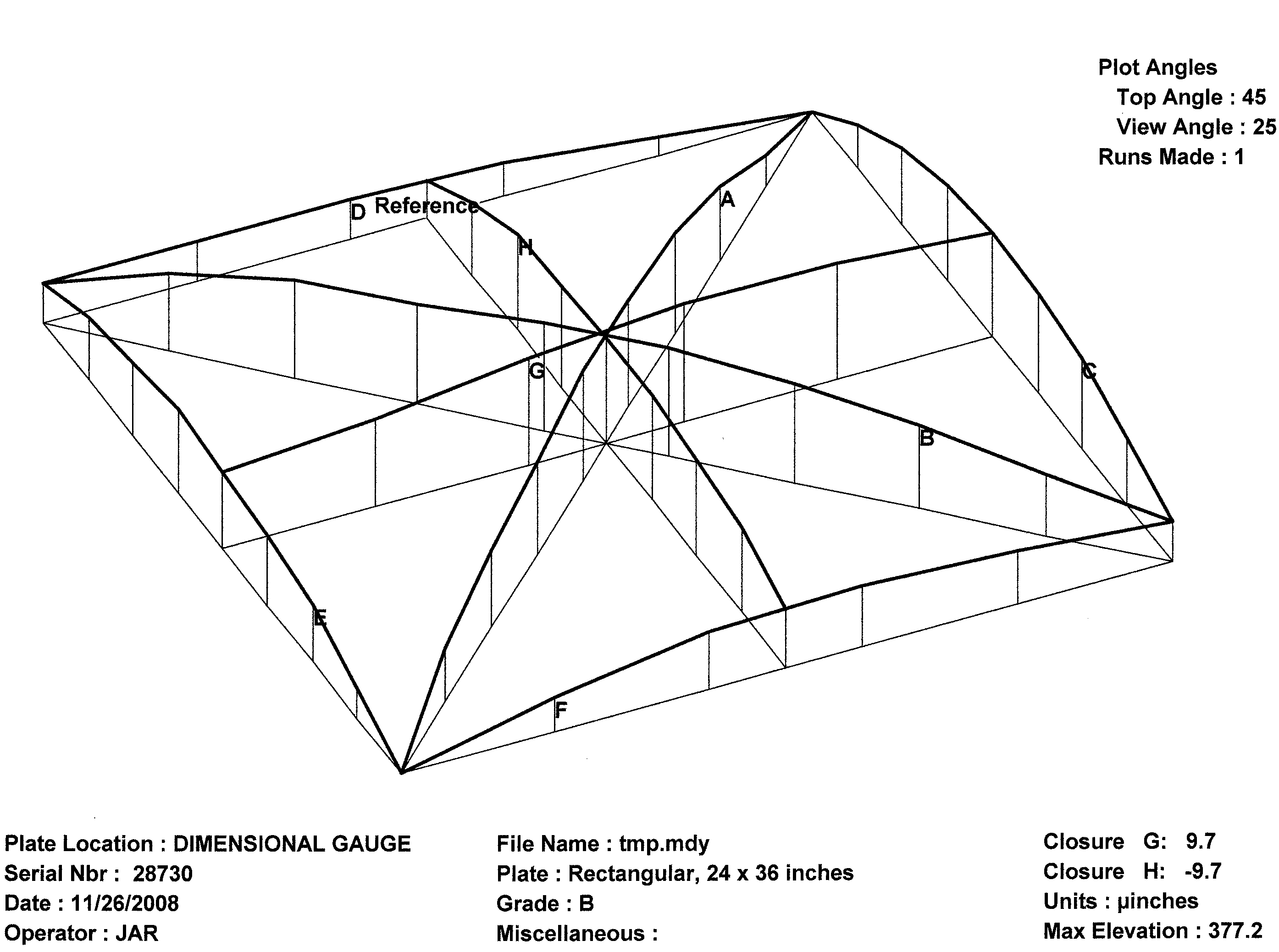
"We Do The Job Right"
Office
(864) 473-1188
Fax (864) 473-1274
Are you getting a full calibration including the three tests required? Can your contractor make the repair even if there is signifcant wear?
Our surface plate work is professional grade. Our rates are very affordable but if you're looking at price alone then you don't understand the importance of knowing your plates are actually repaired correcly. Your customers deserve better. Don't send them parts inspected on plates that not tested properly! You can't afford that!
Mean Plane (Flatness) Test: A computer generated topographical plot ( Next Figure) providing evidence of a Mean Plane (Overall Flatness) value that will be reported on the certificate. You will not get this from labs that use autocollimation to test flatness. It also qualifes the Repeat Reading test and quantifies the flatness value with a real number.

We use electronic levels (Next figure) to measure the plate for flatness. The levels have .1 arc second resolution (4 uIn on a 4" radius sled) and they are capable of very good measurement uncertainties. Call for a full explanation.
Repeat Reading Test: This instrument utilizes a 5 uIn. resolution LVDT/Amp that tests for localized wear. Repeat Reading is not a flatness test, contrary to what you might have been told. It measures only a change in the radius relative to the position of the fixture when it is initially zeroed. Call for full explanation.
The Thermal Gradient Test: The thermal gradient test (Delta T) is not only required but it is crucial in a proper surface plate calibration The average coefficient of thermal expanison in granite is 3.5 uIn./In./Degrees. The Delta T will be measured by a competent lab and reported on a qualifed certificate. The Delta T is important to know because as little as .5 degree Delta T shift can render a plate out of tolerance.The user is responsible to know, especially in critical applications, if the Delta T has changed so he can determine the affect it will have on the overall flatness. Call for a full explanation.
Related resources
- ANSI B89 (Calibration procedure)
- GGG-P-463c. (Not a calibration procedure)
- Detailed Discussion concerning proper surface plate calibration by Jim Bible of Dimensional Gauge Co.